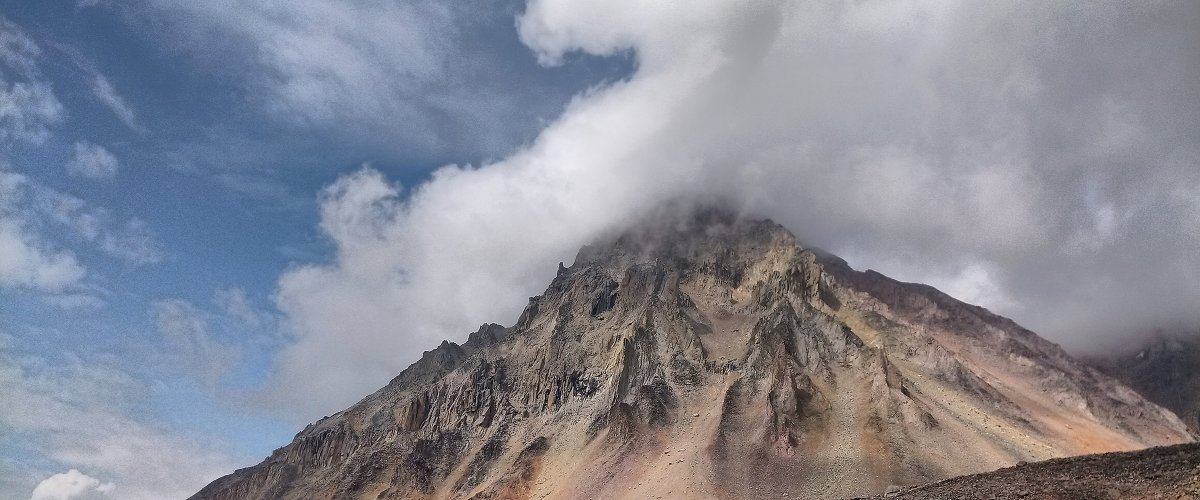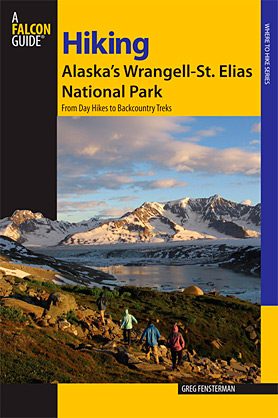
Seasons of the Wrangells: Weather in the Wrangell–St. Elias National Park
The latitude of Glennallen is 62 north so summer here is pretty short. When most people in the lower forty-eight are working in their gardens, Alaskans are still skiing. The best time of year to visit Wrangell-St. Elias National Park depends on what you plan to do there. May is prime time for mountaineering trips in Alaska's Wrangell and St. Elias Ranges but it's early for backcountry trekking. Snow can linger in the passes until late June. The rate at which snow melts out depends on snow depth but also on how warm the spring is. A warm spring with lots of clear skies can melt a lot of snow very quickly. But if it's a cool spring with lots of overcast days then the snow can stick around a lot longer. In general, May is a transitional month and not the best choice for backcountry travel. Late June through early September is the optimal window of opportunity for such trips.
If you are planning a trip that includes glacier crossings, schedule around the second week of July or later to ensure that the ice will be free of snow. Otherwise be sure to have a backup plan in the event that your glacier route proves uncrossable.
Temperatures
Temperatures during the summer in most of Wrangell-St. Elias National Park are mild and pleasant with daytime temps in the upper 60s for most of the summer. Mid summer usually brings temperatures in the low to mid 70s though a heat wave in the 80s is possible but usually lasts only a few days. Nighttime temperatures around the McCarthy area are generally in the low to upper 40s range. By mid August things begin to cool down a bit and by the end of August or beginning of September freezing temperatures at night are possible. Temperatures in the backcountry will be a bit cooler than in McCarthy especially if you're travelling in the glaciated southern area of the park. Glaciers, not surprisingly, have a chilling effect. You will usually notice a marked drop in temperature when walking on or near a glacier.
Precipitation
The amount of rainfall generally increases as the Alaskan summer wears on, especially from mid August into September. By mid September the attention shifts to snow, though snowfall is possible at higher elevations at any time of year. It's not uncommon to see a dusting of snow above 6000 feet starting in August. In September snow accumulation of several inches is possible at 5000 feet and lower. Mid September is about the latest you would want to schedule a pickup in the backcountry of Wrangell-St. Elias National Park. Pilots are very cautious when scheduling late season backcountry flights in Wrangell-St. Elias and will avoid higher elevation airstrips.
Weather varies widely across the huge state of Alaska. The following is a chart showing average weather stats for the McCarthy region of Wrangell-St. Elias National Park.
Sunlight
Because the Wrangell-St. Elias National Park is so far north, there are major shifts in the amount of daylight throughout the year. The longest day of the year (summer solstice) is June 28 when there are 19 hours and 45 minutes of daylight. From mid June to mid July the nights are so brief that it never gets fully dark. If you're doing a backcountry trek during that period you can save a few ounces by leaving your headlamp at home. That much daylight can take a bit of getting used to however. If you wake up and it's bright daylight outside, check your watch before deciding you overslept or you could find yourself halfway through your first bleary-eyed cup of coffee before realizing that it's four o'clock in the morning.
